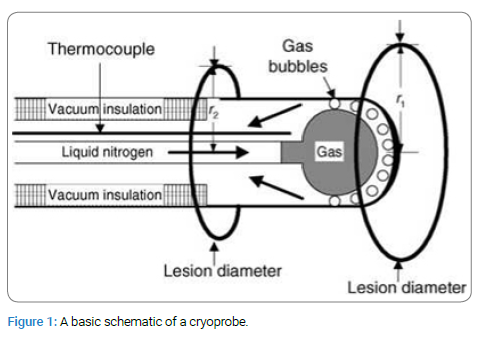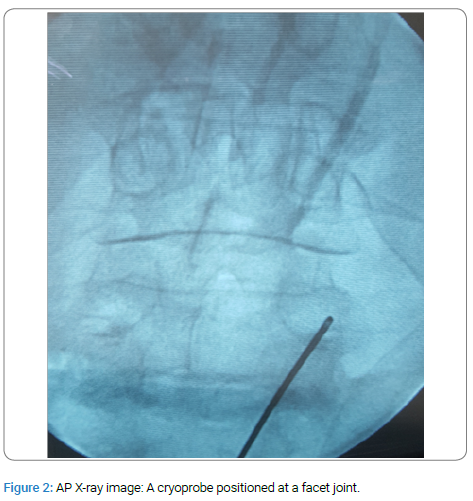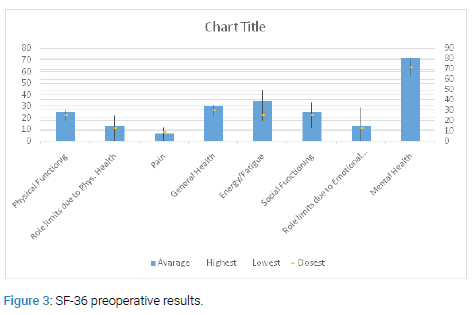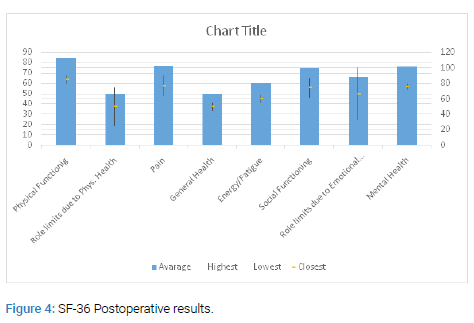Evaluation on Quality of Life in Patients with Low Back Pain Preoperatively and After Undergoing Cryoablation of the Facet Joints
* Petko Ganev;
Vladimir Stavrev;
-
* Petko Ganev: Department of Orthopedics and Traumatology, Medical University Bulgaria.
-
Vladimir Stavrev: Department of Orthopedics and Traumatology, Medical University Bulgaria.
-
Mar 25, 2020 |
-
Volume: 1 |
-
Issue: 1 |
-
Views: 2859 |
-
Downloads: 2396 |
Abstract
Goal of the research: Although studies show good results on relief of Low Back Pain (LBP) after cryoablation of the facet joints, we wished to evaluate the changes in patient's quality of life. This included factors such as their participation in daily activities, social life, work performance, mental health and overall self esteem.
Material and Methods: The objects of our study were a group of 57 patients (32 female and 25 male) that suffered from LBP caused by degenerative changes of the spine and no neurological symptoms in the lower extremities. We reached the targeted facet joints through a single approach on each side using fluoroscope. On the tip of the probes was generated cold temperature (–78°C/–108.4°F), thus creating an ice block damaging the sensory medial branch of dorsal ramus responsible for the “back pain.” We estimated the quality of life using the “SF-36” system, developed by “RAND Health Care” and the modified “Oswestry Disability Index“ (ODI). These questionnaires (SF-36 and Modified ODI) were estimated preoperatively and one month after the procedure by the patients. The obtained data were processed by the methods of nonparametric, variational and correlation analysis (Sepeteliev 52, Markov 46) using a computer and the program “SPSS” for Windows 10.
Results: Preoperatively due to the chronic pain the patients had had their quality of live decreased. Their productiveness, working capacity, self-service and social life was limited resulting in low mental health. The postoperative results showed that one month after the procedure they kept the pain relief and had significant improvement in the areas mentioned.
Conclusion: With the pain relief after cryoablation of the facet joints the patients slowly regain their capacity to fulfill their daily and professional activities. They become more autonomous and have more satisfying social life. In this study we find this procedure to lead to a better quality of patient's life.
Introduction
Low Back pain is a widely observed state especially in hard workers and has a major socio-economic impact [1–3]. With the new method of cryoablation of facet joints opens a new area of research the treatment of this state. In the orthopaedics and traumathology department of Med Uni, Plovdiv, Bulgaria our team started performing this procedure and observed the results of it. In our early researches we focused on how the pain is relieved postoperatively. However later one we decided to focus on how this affects the quality of patients life. To do so we gather information from our subjects preoperatively and then one month postoperatively. We waited for a month so that the subjects were given time to get used with the effect of the procedure and see how this reflects in their life.
Material and Methods
The procedure itself is to reach the facet joints of the degenerative spine with a cryoprobe (Figure 1).

The device then flows low pressure gas (CO2 or NO2) through that probe thus creating low temperature at the tip of the probe (–78°C/–108.4°F with CO2) and eventually an ice block larger than 1 cm in diameter (Joule-Thompson effect) [4]. The ice block itself damages the sensory medial branch of ramus dorsalis of the intervertebral nerves that end at the facet joints and is responsible for the back pain (Figure 2) [5,6].

The whole procedure has a low operative risk [4] and lets the patient return almost immediately to his daily activities [7]. There is however a possibility of relapse because after a few months the nerve might regenerate [8–12]. Still the procedure might be repeated.
The study included 57 patients (mean age 64), 32 female and 25 male from May 2016 to November 2019 in the Department of orthopaedics and traumathology, Medical University, Plovdiv, Bulgaria. It is important to mention that in this particular research we included only patients with idiopathic LBP. Those that had LBP combined with neurological symptoms such as paresthesia and loss of muscle strength showed lower results pre and postoperatively and were a part of a different research. We decided to exclude such patients from this particular research because the cryodenervation aims to damage the sensory nerve reaching the facet joints and the pathological finding is at the area of the common nerve root thus technically the results will be less satisfying. The SF-36 questionnaire by “RAND Health Care” is a useful tool for evaluation quality of life in patients with different states ad diseases. The Oswestry Disability Index (ODI) on the other hand is specifically developed to evaluate the outcome on patients with low back pain. For comparison we chose the Modified ODI instead of the original because in it the question “Sexual Life” is changed with "Employment/Homemaking" which we find for more relevant due to the fact the majority of our subjects are above the age of 50. The patients of the study were informed and agreed to take place in the research. They filled the questionnaire preoperatively themselves. One month after the procedures they were invited on a secondary examination and filled another questionnaire. The results were measured according the guidelines by J Fairbank et al. [13] and "RAND Health Care".
The obtained data were processed by the methods of nonparametric, variational and correlation analysis (Sepeteliev 52, Markov 46) using a computer and the program "SPSS" for Windows 10.
Results
The figure shows the average results on SF-36 preoperatively (Figure 3). As it shows according to the patients preoperatively they are in poor physical state. They can hardly complete their daily activities due to the intense pain. About their mental state, although they are generally positive (Mental Health Column), they admit that their social life is not satisfactory. The postoperative SF-36 as follows (Figure 4) As it show the good effect on the pain leads to higher productivity, better performance in the daily activities, all resulting in better social life.


The results from the Modified ODI showed an average of 33% (30 (30% lowest and 36% highest results) preoperatively [14]. The postoperative results showed an average of 76% (70% lowest and 80% highest score).
Conclusion
In a setting of a short period of follow up the cryodenervation of the facet joints leads to a good effect on the quality of life of patients with LBP. With the pain relief after cryoablation of the facet joints the patients slowly regain their capacity to fulfill their daily and professional activities. They become more autonomous and havemore satisfying social life. It is a mini invasive, low risk procedure, not hindering any future interventions on the spine. In this study we find this procedure to lead to a better quality of patient’s life.
Competing interest
The authors have nothing to declare.
Acknowledgement
Petko Ganev: Designed, drafted and wrote the manuscript.
Vladimir Stavrev: Oversaw and corrected the manuscript.
References
- Shao ZH. Cryotherapy for low-back pain. Zhonghua Wai Ke Za Zhi. 1992;29(12):721–723,796.
- Garg A, Moore J. Epidemiology of low-back pain in industry. Occup Med. 1992;7(4):593–608.
- Burdorf A, Govaert G, Elders L. Postural load and back pain of workers in the manufacturing of prefabricated concrete elements. Ergonomics. 1991;34(7):909–918.
- Garamy G. Engineering aspects of cryosurgery. In: Rand RW, Rinfret A, von Leden H (eds). Cryosurgery, Charles C. Thomas, Springfield; 1968.
- Trescot AM. Cryoanalgesia in Interventional Pain Management. Pain Physician. 2003;6(3):345–360.
- Bogduk N. The Innervation of the Lumbar Spine. Spine (Philla Pa 1976). 1983;8(3):286–293.
- Barlocher CB, Krauss JK, Seiler RW. Kryorhizotomy: an alternative technique for lumbar medial branch rhizotomy in lumbar facet syndrome. J Neurosurg. 2003;98(1 Suppl):14–20.
- Birkenmaier C, Veihelmann A, Trouillier H, Hausdorf J, Devens C, Wegener B, et al. Percutaneous cryodenervation of lumbar facet joints: a prospective clinical trial. Int Orthop. 2007;31(4):525–30.
- Schuster GD. The use of cryoanalgesia in painful facet syndrome. J Neural Orthopaed Surg. 1982.
- Ross EL, Perumbeti P. Cryoneurolysis of lumbar facet joints for the treatment of chronic low back pain. Regional Anesthesia: The Journal of Neural Blockade in Obstetrics, Surgery, & Pain Control. 1991;16:22.
- Brechner T. Percutaneous Cryogenic Neurolysis of the Articular Nerve of LuschkaRegional Anesthesia: The Journal of Neural Blockade in Obstetrics, Surgery, & Pain Control .1981;6:18–22.
- Evans PJ, Lloyd JW, Jack TM. Cryoanalgesia for intractable perineal pain. J R Soc Med. 1981;74(11):804–809.
- Prithvi Raj P. Practical Management of Pain. 5th ed. Year Book Medical Publishers: Mosby-Elsevier; 1986.
- Fairbank J, Pynsent P. The Oswestry Disability Index. Spine. 2000;25(22):2940–2952.
Keywords
Cryoablation; Cryodenervation; Cryorhizotomy; Low back pain; Facet joints
Cite this article
Ganev P, Stavrev V. Evaluation on quality of life in patients with low back pain preoperatively and after undergoing cryoablation of the facet joints. Clin Case Rep J. 2020;1(1):1–3.
Copyright
© 2020 Petko Ganev. This is an open access article distributed under the terms of the Creative Commons Attribution 4.0 International License (CC BY-4.0).




